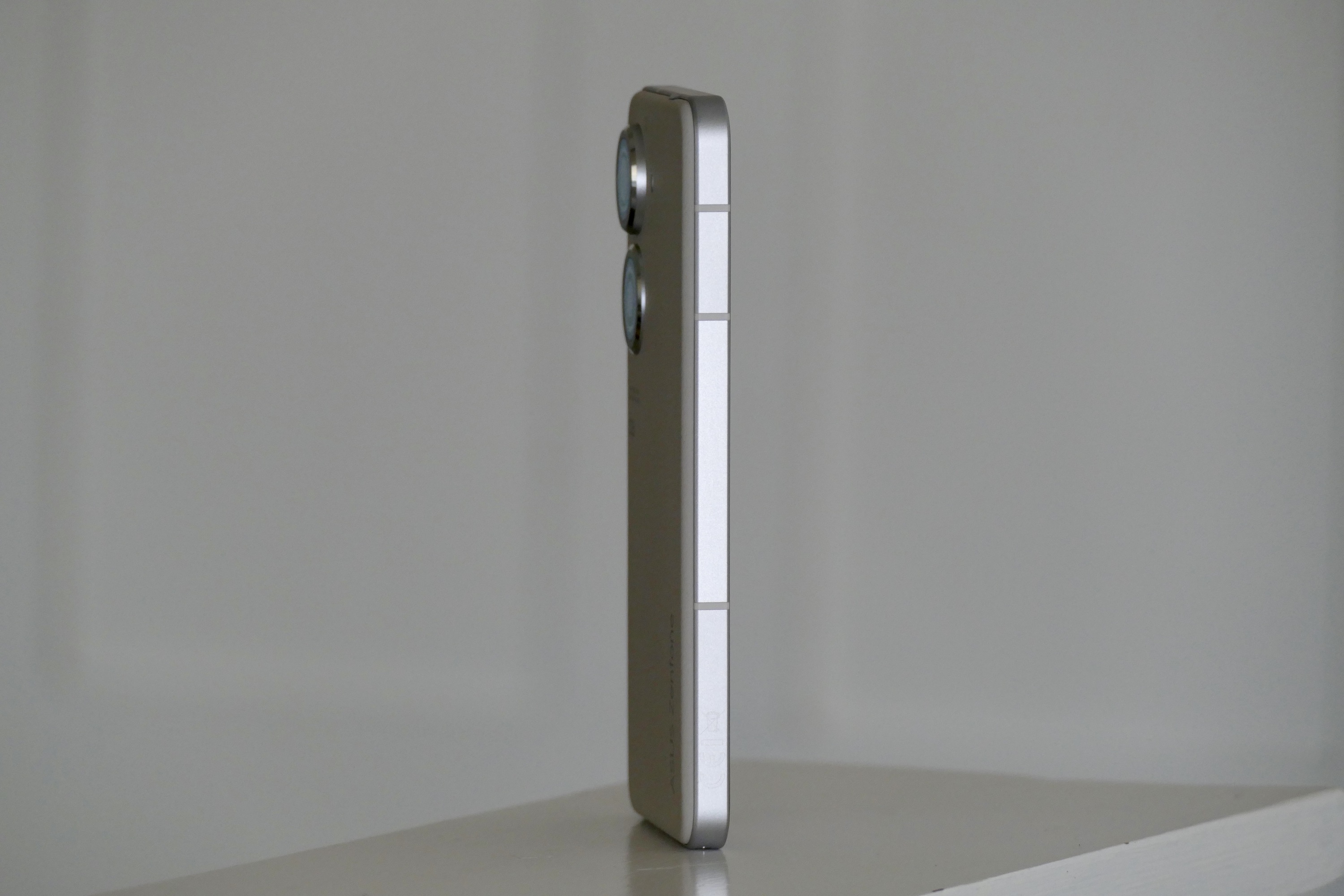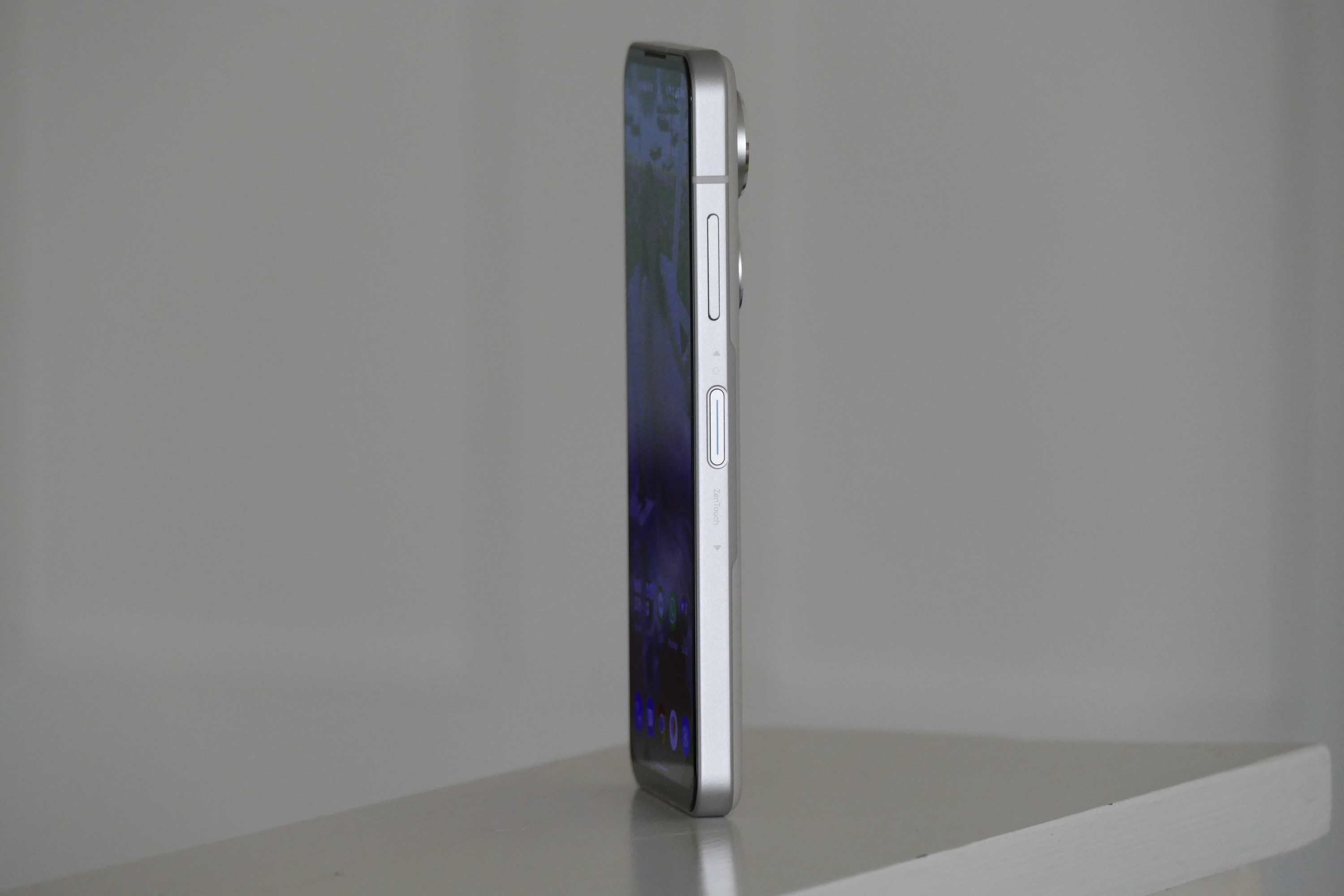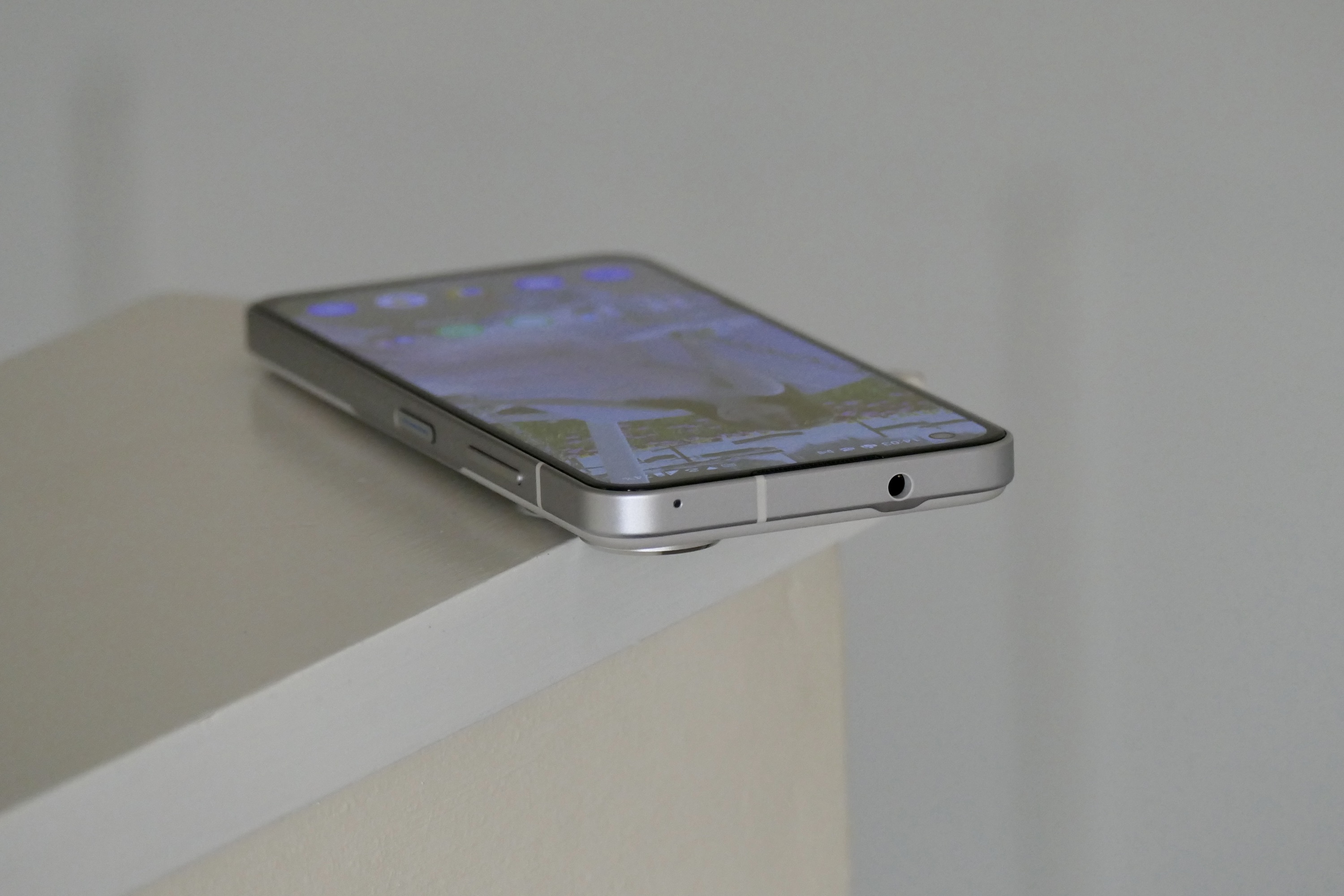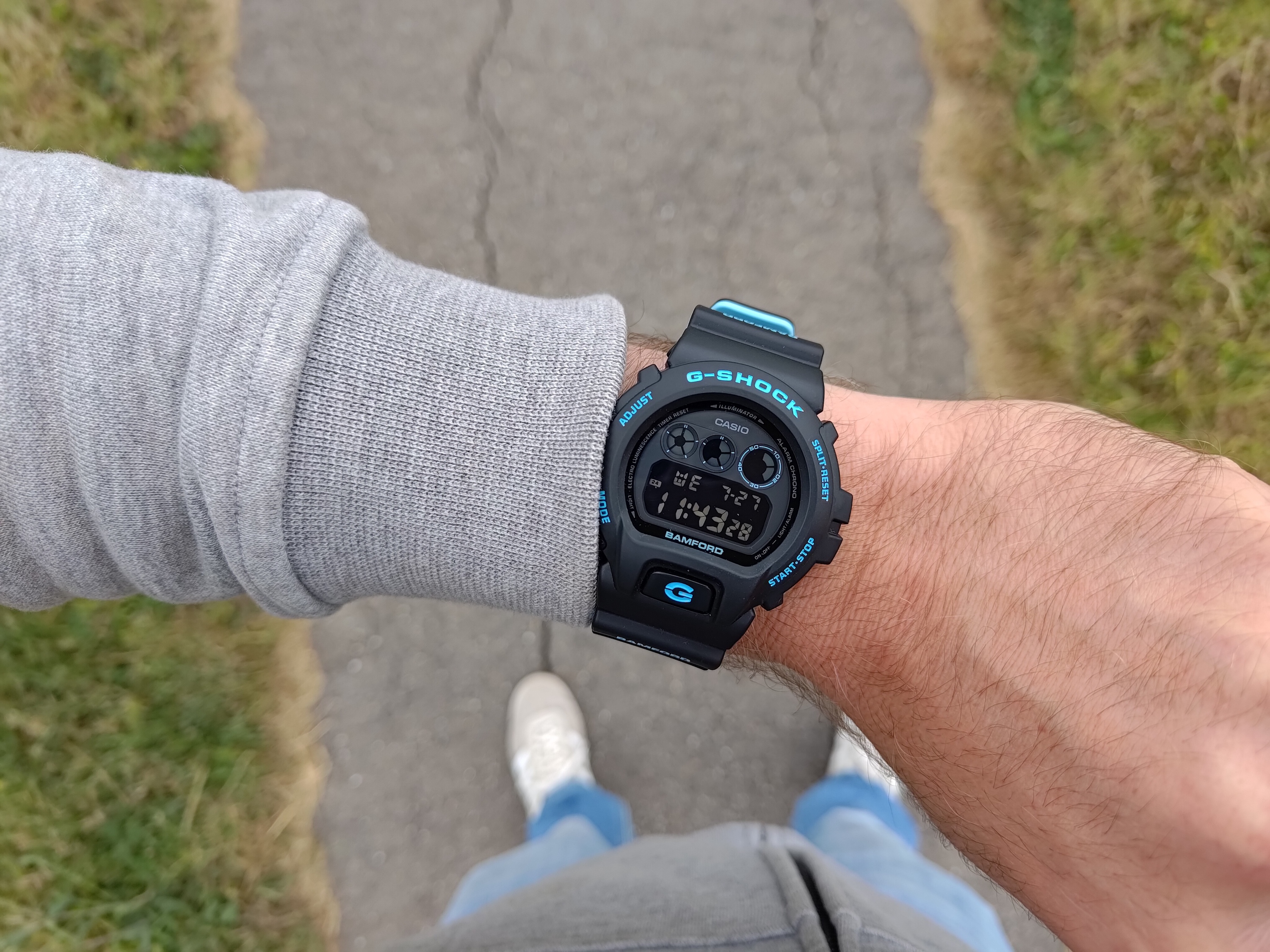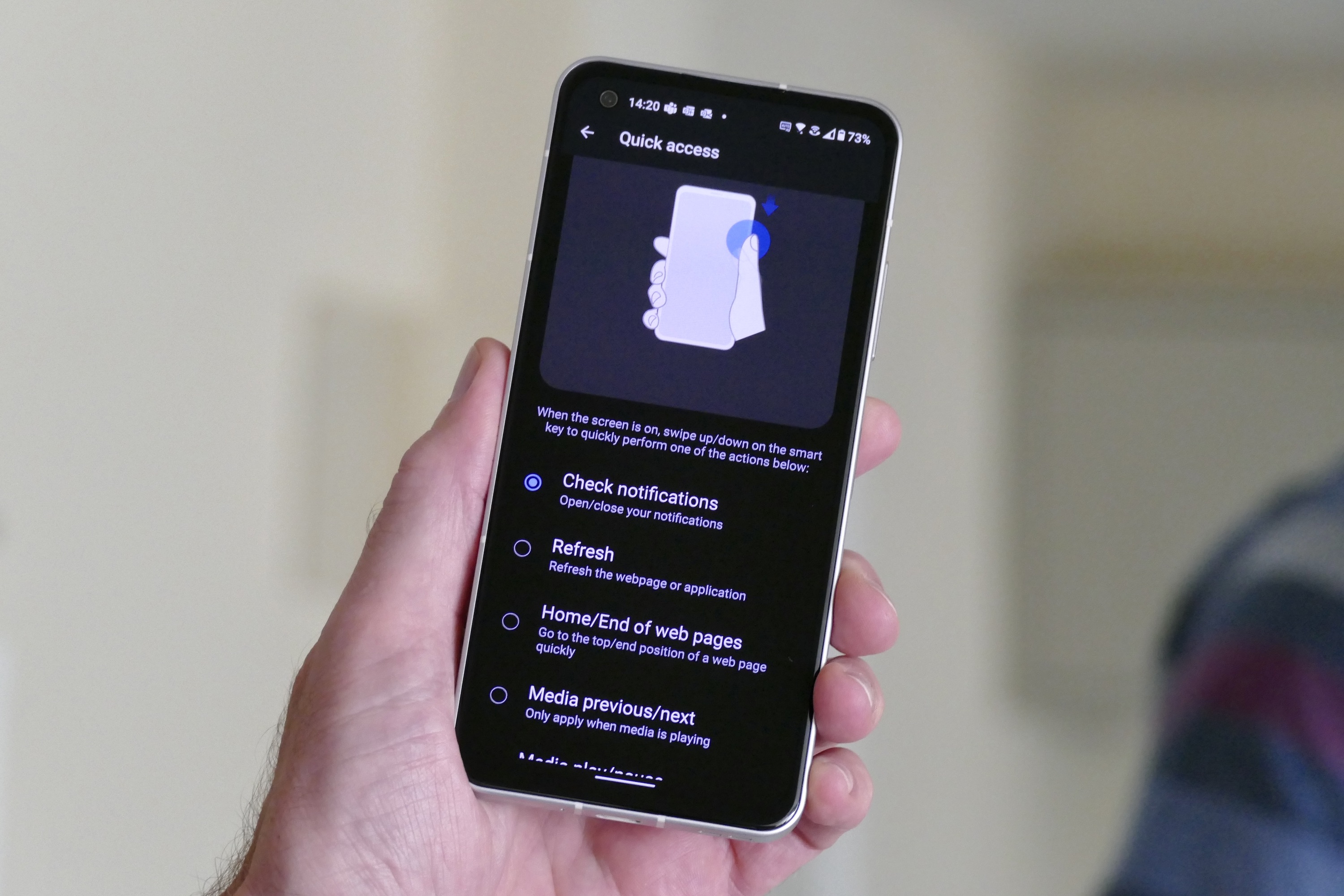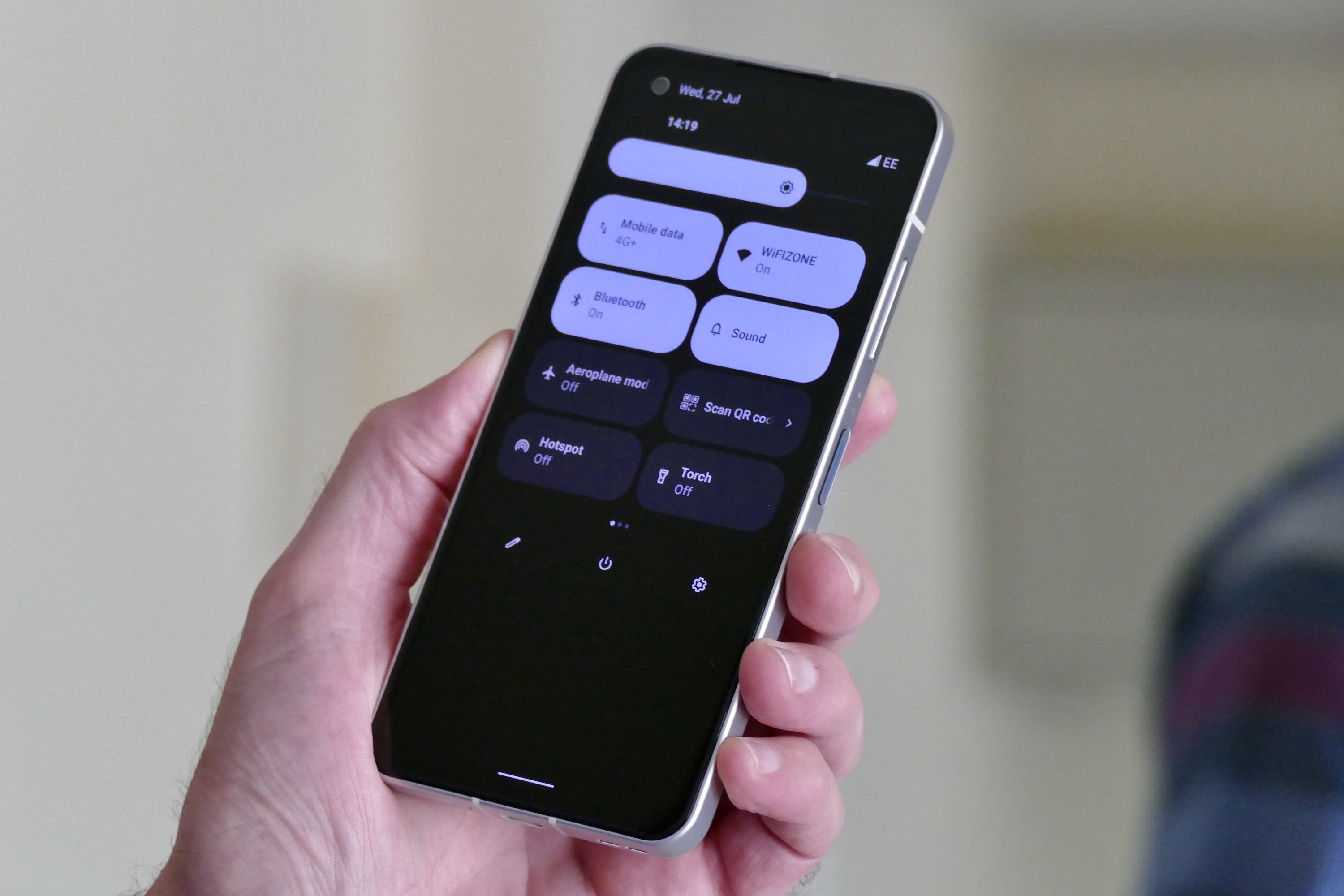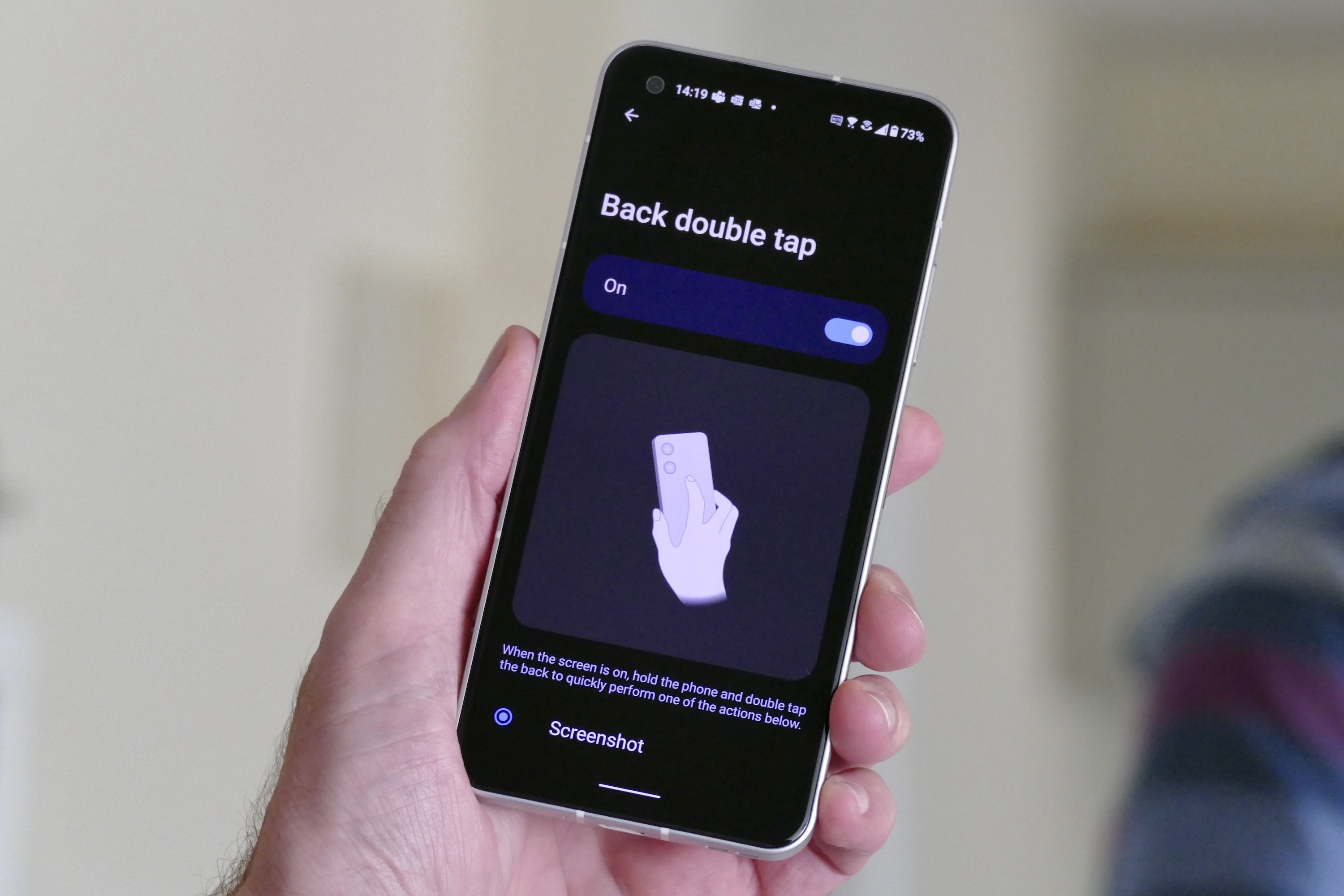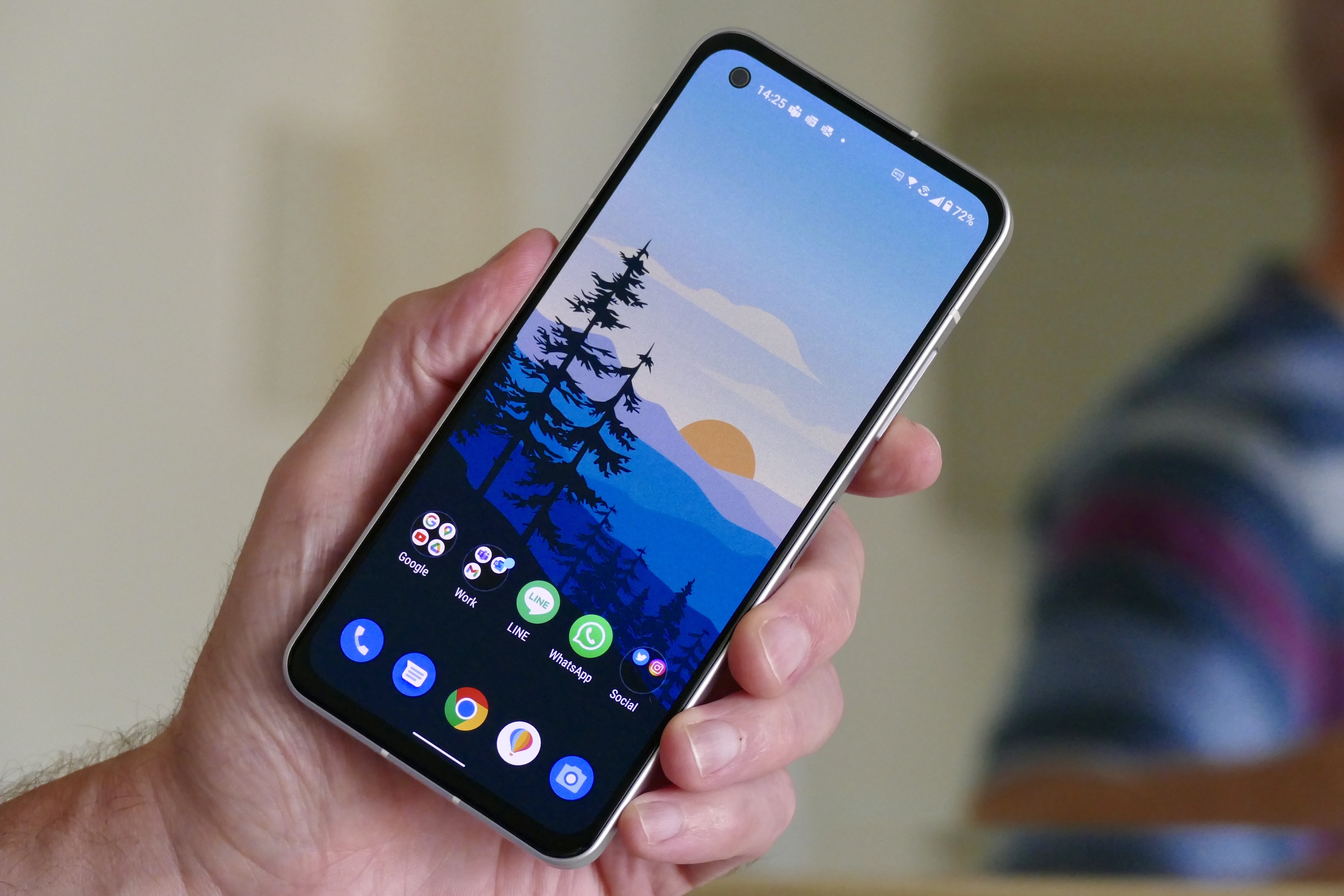“The Asus Zenfone 9 is small enough to be used with one hand, but still has all the power of a massive flagship phone. While this compromises battery life and camera features, it'll be an acceptable trade-off for some.”
- Compact and easy to handle
- Powerful processor
- Neat, lightweight design
- Strong audio features
- Main cameras take good photos
- Gimbal disappoints
- Screen doesn’t get bright enough
- No wireless charging
Since flagship smartphones must squeeze in more cameras, bigger screens, and even styli to appeal these days, the overall size of the devices has increased too. Thus, there have been calls for brands to also do the opposite — make small phones with flagship processors. Asus has listened to your calls and made the Zenfone 9, and it has a whole lot going for it.
Design
The Zenfone 9’s size follows Asus’s own directive of making a smartphone that’s less than 70mm wide and under 150mm tall to make it perfect for one-handed use, which began with the anonymous and rather overlooked Zenfone 8. This time, the company has used a squared-off shape and right-angle corners to ensure it can pack as much inside the phone as possible, and turned to aluminum for the frame and a polymer material rather than glass on the rear panel to reduce weight.
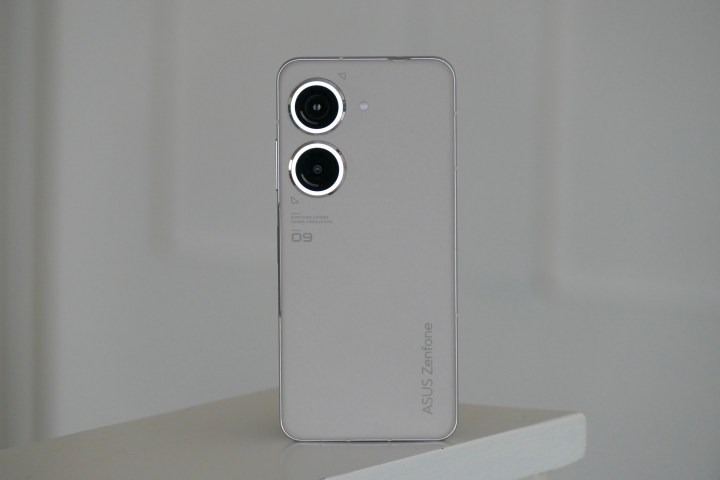
The result is the Zenfone 9 weighs 169 grams, it’s 68mm wide, and 146mm tall. This makes it a few millimeters less wide than the iPhone 13 and the Galaxy S22, and about the same height, but the slab-like design makes it thicker than both at 9.1mm. The screen is slightly smaller than the iPhone 13 and S22 at 5.9-inches. If the 6-inch Google Pixel 5 was your last ideally-sized phone, then the Zenfone 9 may suit you as it is less wide, only 2mm taller, and about 15 grams heavier.
I’ll be honest at this point and say the Zenfone 9 (and its contemporaries mentioned above) are too small for my own personal liking, but I appreciate others will feel differently. That said, it’s extremely convenient to slip the phone into a pocket and forget it’s there, and to use the entirety of the operating system with my thumb as I hold the phone in one hand. The light weight is also beneficial, as there is absolutely no fatigue when using the Zenfone 9 for long periods of time.
It’s extremely convenient to slip the phone into a pocket and forget it’s there.
Despite the flat sides, the new polymer rear panel has been curved nicely at the edge, so the phone never digs into your palm or fingers. The unusual material has a unique, almost textile-like texture — and unlike glass or metal, it won’t collect fingerprints or smudges. The two large cameras are set inside metal rings to give the back some identity, and I really like the light grey text, numbers, and shapes used around them. The back of the Zenfone 9 looks and feels fantastic.
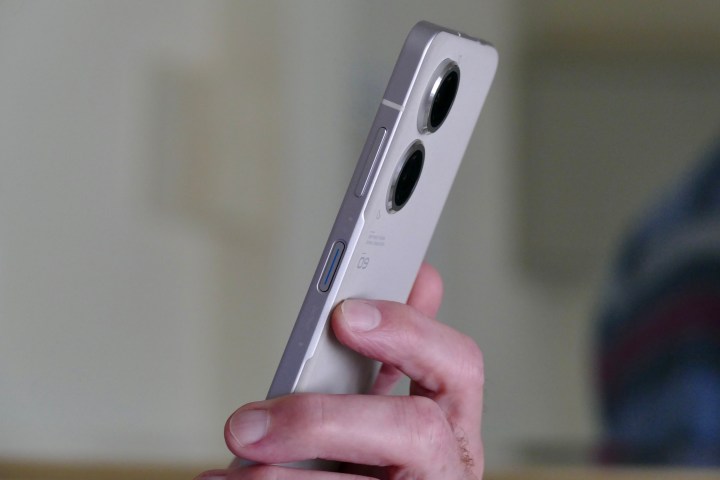
What are the downsides of the Zenfone 9’s small size? There really aren’t any when you only consider the design. It’s convenient, it’s pretty, it’s going to be fairly durable, and it is suitable for everyone to use — regardless of hand size. But this isn’t our verdict on the phone as a whole, and the downsides of a small phone come later on.
Screen and performance
The 5.9-inch, Samsung-made AMOLED screen has a 2400 x 1080 pixel resolution, a 120Hz refresh rate, a 240Hz touch sampling rate, plus Gorilla Glass Victus over it. Inside is a Qualcomm Snapdragon 8+ Gen 1 processor, the same as the one used in the ROG Phone 6 gaming phone, and either 8GB or 16GB of RAM. The basic version comes with 128GB of storage space, but you can pay more for a 256GB model. For reference, our review model is the 16GB/256GB version.
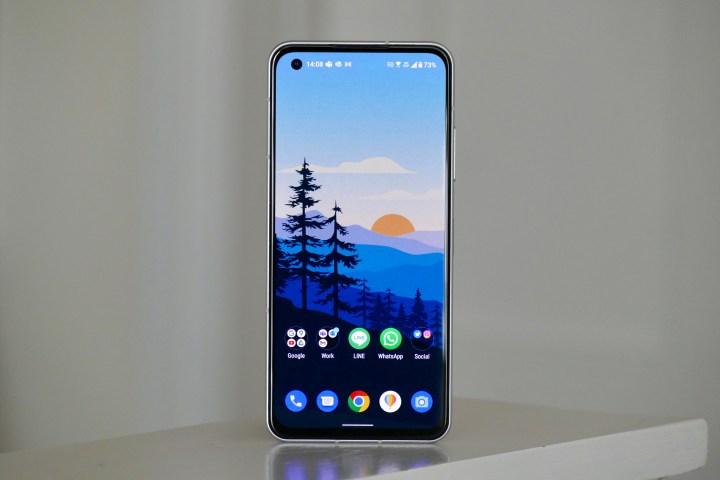
While the diminutive size is good for convenience, it doesn’t make the Zenfone 9 spectacular for multimedia. It’s not that the screen is bad, but if you spend plenty of time watching video, looking at photos, or playing games, a big screen makes the whole experience more enjoyable. It still all looks good on the Zenfone 9, just smaller. And when you have this amount of power at your disposal, it’s a bit of a shame not to take advantage of it.
Yes, power. The Snapdragon 8+ Gen 1 is an absolute beast. Nothing seems to bother it, and it plays Asphalt 9: Legends and Diablo Immortal without a problem, so it shrugs off general everyday tasks with ease. The additional RAM will keep more apps running in the background, although 8GB will probably be enough if you’re not a prodigious multi-tasker. While Asus has built in a vapor cooling chamber, the Zenfone 9 still gets quite warm to the touch when playing games. It’s never burning, but you’ll notice it.
Watch videos, and the screen’s high level of contrast and beautiful colors really jump out, and it’s far more vibrant than the natural tones of the iPhone 13. It’s typical performance for a Samsung AMOLED, and it closely matches the Galaxy S22. However, despite a claimed 800 nit outdoor brightness, it never quite gets bright enough for my taste. I often reached for the brightness control, only to find it was either at its maximum, or about 80% of its max setting, where the final 20% didn’t really make much difference to visibility.
I’ve left the screen on its Auto setting for the refresh rate. It has proven effective, with 120Hz smoothness delivered when I want it, and if it does drop to 60Hz at any time, I haven’t noticed. I have noticed the speakers, though. There are dual speakers on the Zenfone 9 and Asus has worked with Dirac (as it has on the ROG Phone) to tune them. They get very loud but aren’t especially pleasant above about 70% volume, and there is masses of vibration through the polymer rear panel from 50% or so.
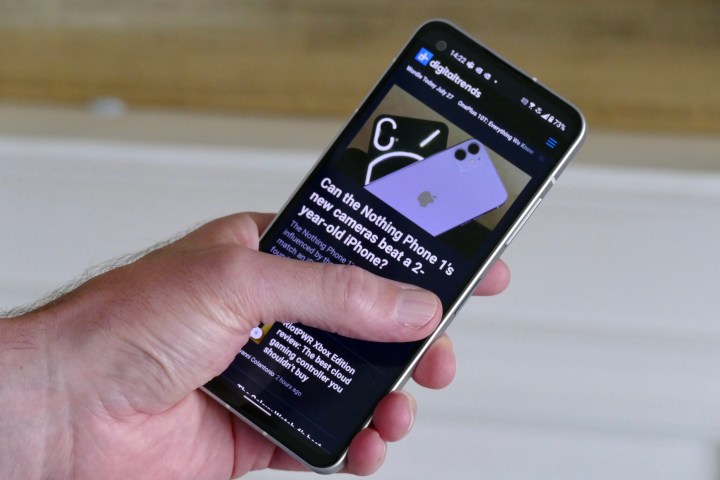
Play with the AudioWizard app, and you can manually adjust the equalizer or choose from four different sound profiles. It’s set to Dynamic by default, but I found switching to Music reduced some of the harshness and placed better emphasis on voices, which is helpful when watching video. Continuing the Zenfone 9’s excellent audio package is support for Snapdragon Sound, AptX Adaptive, and AptX Lossless (with selected headphones like the NuraTrue Pro). And there’s a 3.5mm headphone jack too.
The Zenfone 9 truly delivers flagship smartphone performance, visuals, and audio — just in a compact package. That will be enough for some, but if you really want to make the most of all this raw ability, then do think hard about whether a larger screen would mean you end up getting more from your phone over time.
Camera
The Zenfone 9 has a 6-axis gimbal to make the camera stand out from the competition. It operates when taking video or stills, and unlike optical image stabilization (OIS), the entire camera module moves by up to three degrees in any direction to compensate for movement, resulting in smooth video and sharp stills without image deterioration. Asus then throws in electronic image stabilization (EIS) to suppress motion further, plus the camera even intelligently predicts movement ahead of time.
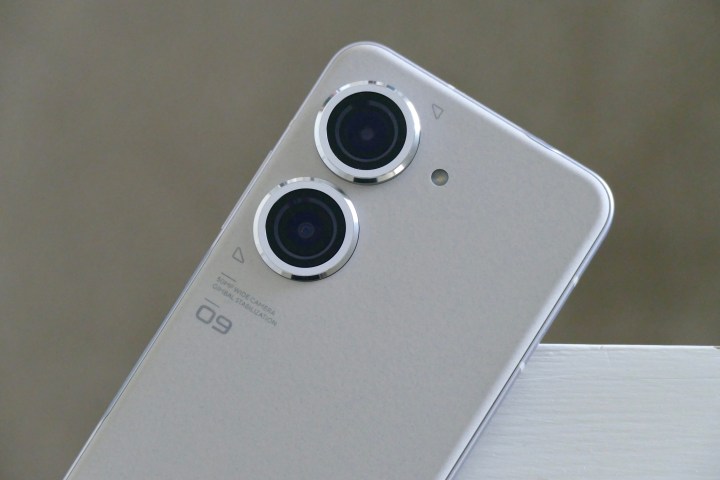
There are two cameras on the phone. The main 50-megapixel Sony IMX766, which has the gimbal attached, and a 12MP Sony IMX363 113-degree wide-angle camera. Both have autofocus, there’s 8K video recording, a macro mode built into the wide-angle camera, and a 12MP selfie camera with autofocus inside a hole-punch cutout in the screen.
It’s not the first time a gimbal has been used on a smartphone, with Vivo including one on the X70 Pro+ and X80 Pro, and it’s presumably here on the Zenfone 9 to give the camera some extra appeal in the face of heavy competition. Unfortunately, in my tests so far, it hasn’t really impressed me.
https://twitter.com/AndyBoxall/status/1552647813728804864
It’s at its best when shooting video handheld and attempting to keep an object in the frame, where it compensates for natural, flowing motion effectively. But when you shoot while in motion, the results aren’t as good as other phones that don’t have a gimbal.
For example, I mounted the Zenfone 9 in my car and drove down a particularly bumpy piece of road, then did the same with the iPhone 13 Pro. The iPhone’s footage is clearer and steadier and with less obvious digital correction. The Zenfone 9’s video is shakier and less clear, and the exposure and overall quality aren’t as good either. It was a similar situation when running with the Zenfone 9 and shooting video. It’s not a bad feature, but don’t expect it to be dramatically better than a very good OIS system.
Stills look great, provided you don’t mind some heavy-handed HDR effects, as the Zenfone 9 loves to sharpen up scenes with extra contrast and saturation. The results are often instantly shareable, but won’t always please purists. Consistency between the main camera and the wide-angle camera is good, and the selfie camera takes balanced photos with good skin tone (but can get flustered in poor lighting). One thing to note is previews on the phone’s screen make photos look worse, and it was only after looking at the photos in the gallery — and on a monitor — that the strong performance shone through.
Software and other features
Asus’s ZenUI is great, and one of the best non-Pixel software experiences you can have on an Android phone. It’s fast, cleanly presented, and mostly free of filler. Yes, there are some silly pre-installed apps — a calculator, a weather app, a tips app, and things like Facebook and Netflix — but nothing too obnoxious. It’s based on Android 12, and most of Google’s main design elements remain, so it’s pretty and suitably customizable.
It’s essentially the same system you get on the ROG Phone 6, just without the option to activate the Republic of Gamers theme, which isn’t really a problem. It has been very reliable, I haven’t missed notifications, and it has run all the apps I require. It’s very pleasant to use on a daily basis.
ZenUI is great, and one of the best non-Pixel software experiences you can have on an Android phone.
The fingerprint sensor is in the power key and takes some getting used to, as it’s flush with the body and I found it quite hard to locate quickly. It also houses the Asus Smart Key, which adds gesture controls for some features. Like the old Pixel 5’s rear-mounted sensor, a downward swipe opens the notification shade, or you can assign it to play media or refresh webpages. While the feature works, it’s very sensitive, and I had to turn it off after a while as the notification shade was always appearing when I didn’t want it to.
Battery and charging
A 4,300mAh capacity battery may not sound like much, but Asus only has a limited amount of room to work with inside the Zenfone 9. It’s another downside of demanding high specs inside a small device, and the use time reflects this. If you don’t push the phone hard (by which we mean not playing games and watching video), it will just last two days without requiring a recharge. The Snapdragon 8+ Gen 1 is proving to be very efficient when it’s not being challenged.

However, if you exploit the Snapdragon 8+ Gen 1 and enjoy the lovely screen, expect the battery life to fall quite dramatically by about 10% for 30 minutes of gameplay or 1440p video playback. Hit the Zenfone 9 hard with an hour of this, plus all the usual activity and some photos or video, then it’ll last a day. It’s not terrible, and mostly expected for a battery with this capacity, but if you’re going to use the phone as its specs encourage you to do, then be prepared to visit the charger each day.
A 30W charger is included in the box, and the phone supports Power Delivery 3.0 and Quick Charge 4.0, but it does not have wireless charging. You’ll need more than an hour to fully charge the battery using the Asus charger.
Price and availability
The Asus Zenfone 9 will be available in the U.S. in the near future, and the 8GB/128GB version will cost $699. In Europe, the price has been set at 799 euros, and pre-orders will begin on July 28 through Asus’s online store and selected partners.
Our take
If small and powerful is what you want from a smartphone, the Asus Zenfone 9 delivers, but it’s not quite the full flagship phone experience in a tiny package some may still crave, and the reason why is pure physics. The size of the battery and the complexity of the camera are constrained due to the size of the phone. You simply can’t fit a whopping battery and six cameras inside.
You end up with a compromise. If you don’t care much about a really fantastic, feature-packed camera but want the overt power to play the latest games and multitask to your heart’s content — but in a phone two-thirds of the size of a Galaxy S22 Ultra or Pixel 6 Pro — it’s a strong option. However, if you plan on making full use of the Zenfone 9’s ability, the battery life may not always keep up. The screen, although attractive, isn’t as bright as we’d like either.
Asus is very good at making capable, exciting smartphones for small segments of the phone-buying public. The ROG Phone 6 is the recommended choice for mobile gamers, and the compact Zenfone 9’s sheer, giant-killing power means it’ll instantly appeal to anyone tired of juggling a tablet-sized super phone.
Is there a better alternative?
Do you want a small phone with big power? The iPhone 13 and Samsung Galaxy S22 compete in size, weight, and price. Both are excellent. The iPhone 13 Mini is even smaller than the Zenfone 9, as is the iPhone SE (2022) and both use flagship-spec processors. But the size is even more of a compromise than the Zenfone, and if you plan to play games, neither is the best choice.
How long will it last?
The Zenfone 9 has an IP68 water resistance rating, so it’s relatively protected against water and dust, and should be fine with a mild dunking. The software is currently up to date, and Asus says it plans to deliver two major version updates and two years of security updates. This is average, but not as long as software commitments from Samsung and Google. Otherwise, the phone is cutting-edge, with a huge amount of power inside. It should easily last you for two or three years before you need to think about an upgrade.
Should you buy it?
Yes. The Zenfone 9 is as close to a true compact flagship smartphone as it’s possible to get, and provided you understand the drawbacks that must come with that, it’s a great purchase.


